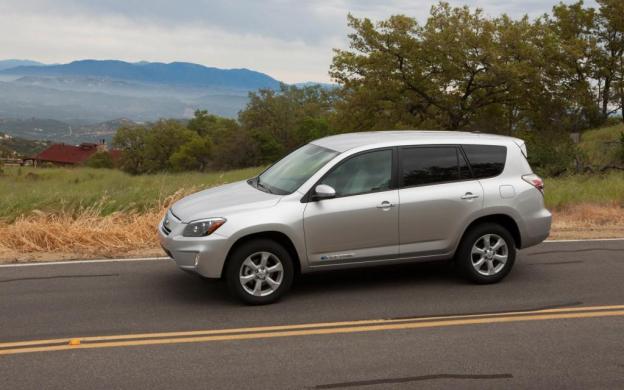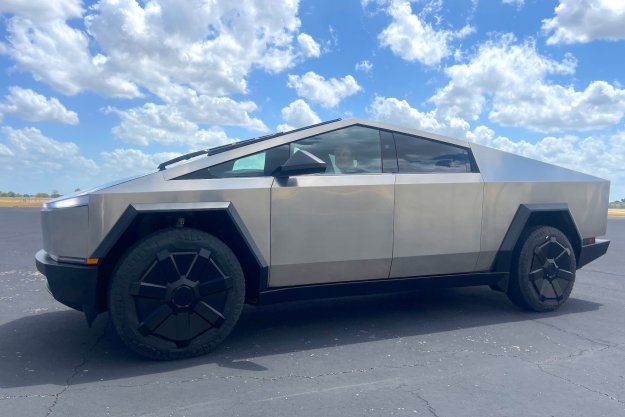 Tesla’s Model X will not be the first all-electric SUV on the market. Toyota built electric versions of its RAV4 from 1997 to 2003, albeit in limited numbers. The Japanese company is re-entering the electric car market with a new RAV4 EV this summer.
Tesla’s Model X will not be the first all-electric SUV on the market. Toyota built electric versions of its RAV4 from 1997 to 2003, albeit in limited numbers. The Japanese company is re-entering the electric car market with a new RAV4 EV this summer.
The RAV4 EV seems like a potential competitor to the Model X, but its powertrain was designed by Tesla. Toyota paid Elon Musk’s car company $60 million to develop a battery pack and electric motor. The motor sends 154 horsepower to the front wheels and gets its juice from lithium-ion batteries.
According to Toyota, the reincarnated RAV4 EV will have a range of 100 miles per charge. If the RAV4 can achieve that range in everyday driving, it will stack up well against other EVs. The electric SUV can be charged from either a 120V or 240V outlet in as little as six hours. The battery pack comes with an eight-year/100,000-mile warranty. In normal driving, the RAV4 EV will accelerate from zero to 60 mph in 8.6 seconds, and reach a top speed of 85 mph. It should be able to keep up with highway traffic, but just barely. It is also a major improvement over the original RAV4 EV, which had a top speed of 78 mph and took 18 seconds to reach 60 mph. The old RAV4 reportedly came close to the new car’s 100 mile range, and many of these first-generation models are still on the road.
The new RAV4 EV also has a “sport mode,” which makes the RAV4’s computer less frugal. In sport mode, the RAV4 will do 0-60 in 7.0 seconds and reach a top speed of 100 mph. The gauges also change from blue to red, either to impart a sense of sportiness, or to symbolize the car’s anger about being driven irresponsibly (sport mode reduces range).
Why Toyota decided to put a sport mode on an electric SUV is anyone’s guess, but its other modifications seem more sensible. Compared to a regular RAV4, the EV is more aerodynamic; it sports a drag coefficient of 0.30. This is because of the more slippery nose, with its shrouded grille and redesigned front bumper. The headlights are more efficient LEDs (except for the high beams, which are halogen).
Toyota also added a few luxuries, including heated front seats upholstered in “Neutron” fabric and Toyota’s Entune connectivity system. These items may have been thrown in to justify the RAV4 EV’s higher base price. A conventional RAV4 costs $23,500-$30,000, but the EV will sticker for $50,610, including an $810 shipping charge. Saving the planet doesn’t come cheap.
Admittedly, the RAV4 EV will not be a mass-market item like the Chevy Volt and Nissan Leaf. Toyota will start selling its electric SUv this summer, but only in California. It will eventually be sold elsewhere, but Toyota only plans on building 2600 cars. That will make the RAV4 EV very rare. It also makes business sense. Toyota will have the market to itself until its partner’s Model X goes on sale in 2013.
Editors' Recommendations
- Volkswagen ID.4 vs Tesla Model Y
- 2021 Toyota RAV4 vs. 2021 Subaru Forester
- Toyota’s E-volution continues with 2021 Mirai and 2021 RAV4 Plugin



